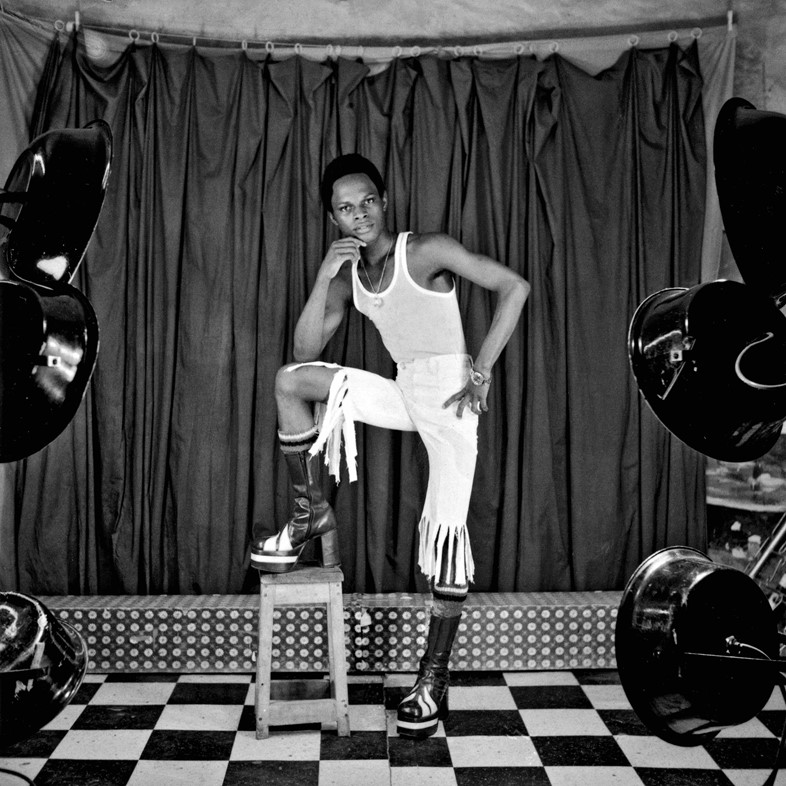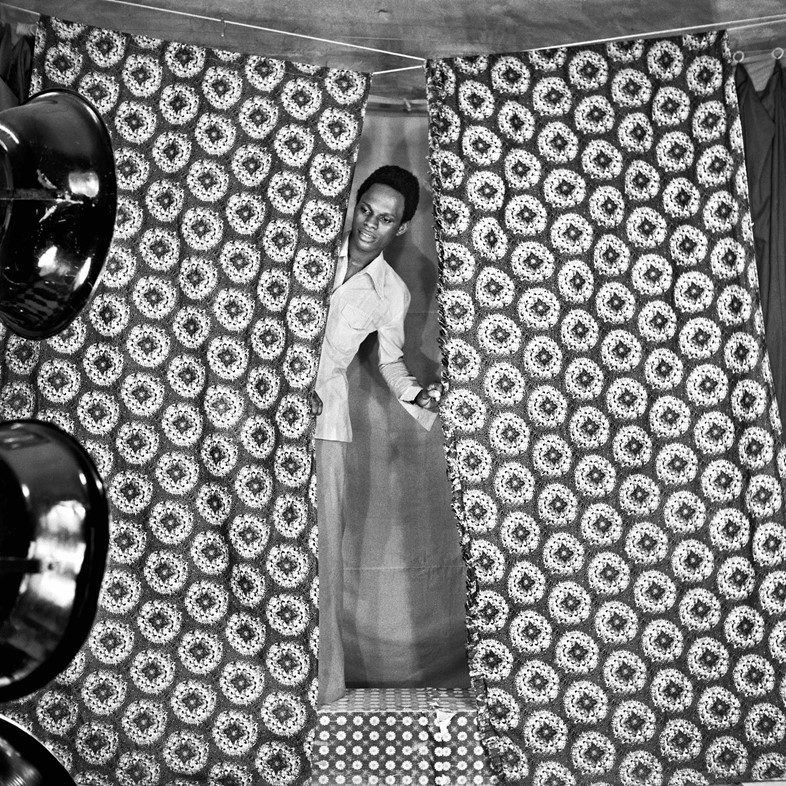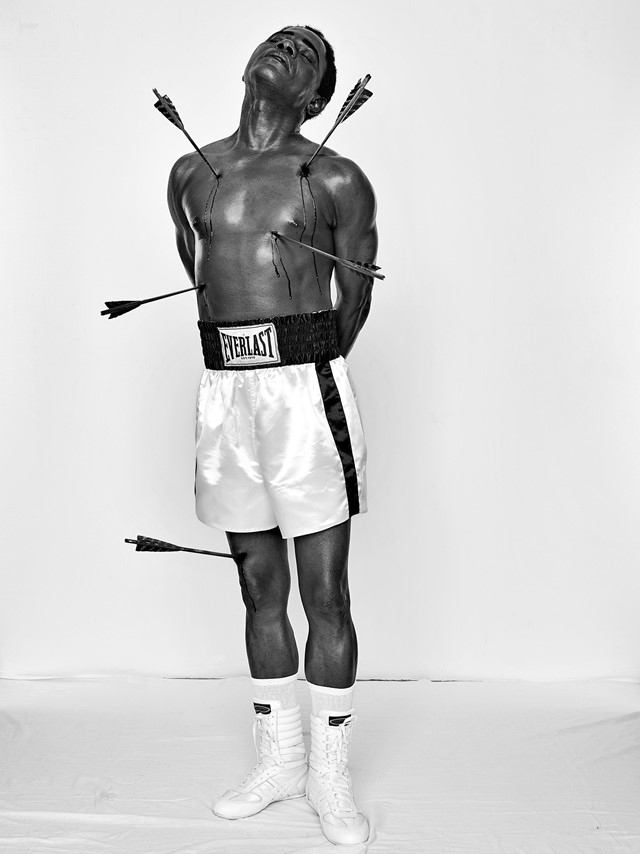A new exhibition in New Jersey of Samuel Fosso’s subversive self-portraiture mixes history, politics, religion, and culture – all while examining complexly layered aspects of Black identity
Invented nearly two centuries ago, photography has been used as a tool for both liberation and subjugation of the Global South. As Europeans colonised Africa, they used the camera to objectify, exoticise, and “other” indigenous people in order to justify their conquest and exploitation of ancient lands. With the African Independence Movement of the 21st century, local photography studios reclaimed the power of self-expression through portraiture.
In Nigeria, families traditionally commissioned portraits of new children when they reached the age of three months – but Samuel Fosso was not photographed until the age of ten. Born in 1962, as a child Fosso was sick and partially paralysed – his father thought that having a portrait made might be a waste of money. The absence of these vital images left a void in Fosso’s formative years, one further exacerbated when the Nigerian Civil War broke out.
After his mother died, Fosso fled Biafra and travelled to Bangui in the Central African Republic to live with an uncle. Here he began an apprenticeship with a local photo studio before opening his own, the Studio Photo Nationale in 1975, at the tender age of 13. After a long day at work, Fosso used up the last frames on the rolls of film making self-portraits he would send home to his grandmother in Nigeria
“Samuel Fosso is a survivalist,” says Princeton University professor Chika Okeke-Agulu, who has known and worked with Fosso for years. “Photography became both a space of self-enunciation and a space of refuge as a child exile in the Central African Republic. The studio became the space where he could establish symbolic lines of communication with home. That’s what led him to turn the camera on himself.”
Fosso’s practice on both sides of the camera quickly surpassed the realm of self-portraiture and began to delve into performance – a place to explore the spaces where history, politics, religion, and culture mingle and merge. Over the past five decades, Fosso employed what Okeke-Agulu describes as a “photographic masquerade,” casting himself as archetypes, revolutionary leaders, and mythic figures to examine complexly layered aspects of Black identity.

Whether remaking iconic images of Angela Davis, Muhammad Ali, and Patrice Lumumba for African Spirits (2008), casting himself as supreme leader of the Catholic Church for Black Pope (2017), or transforming into fictional characters like the businessman, the American feminist, and the African chief for Tati (1997), Fosso’s groundbreaking series offer critical perspectives of the Black experience liberated from the narrow confined of the white gaze.
Working with Silma Berrada, Lawrence Chamunorwa, Maia Julis, and Iheanyi Onwuegbucha, Okeke-Agulu has curated the artist’s first major US survey, Samuel Fosso: Affirmative Acts, which is on at Art on Hulfish. Organised by Princeton University Art Museum in collaboration with the Walther Collection, Affirmative Acts traces the artist’s evolution over the past half century as he imagines the subjectivities of Black experience through his own body.
Fosso uses photography as a tool of postcolonial critique to examine the interconnectedness of modern life through the dual lens of Pan-Africanism and foreign influence from both the East and the West. While many critics have focused on the aspects of gender and sexuality in Fosso’s work, Okeke-Agulu points to a much deeper line that runs through his practice: the fundamental issue of displacement he experienced in his youth.

“The yearning to return home is one of the most powerful motivations for him as an artist. His art was one of the only avenues to accomplish that homeward journey,” Okeke-Agulu says. “There is a ritualistic aspect of acting that is important to him. The masquerade is not simply about the physical performance, it is also a philosophical and spiritual connection to imagined communities in his hometown in Nigeria, or the Pan-African world of Blackness – a quest to return home that he did not accomplish until 2015 when he moved his family back to Nigeria and built a studio there.”
Although Fosso is deeply attuned to the zeitgeist, he is not beholden to fashionable topics but rather has a clear vision of himself, who he is, and how he exists in the world. When exploring intensely personal work, Fosso moves beneath the surface to inhabit the profoundly spiritual spaces to capture the most ephemeral and ethereal aspects of existence itself.
Pointing to the series SIXSIXSIX, which features 666 tightly cropped portraits made in 2015, Okeke-Agulu observes, “What you see here is the kind of introspection that runs against everything we believe about human subjectivity in the here and now – the selfie, which is the outward looking self. We’re taking pictures of ourselves for others to see what we want them to see, and that’s what this work rejects. It’s a long introspective engagement with the self, the kind of thing I imagine only possible in monasteries or in places where people have nothing else but to think about themselves, their life, and their place in the world.”
Samuel Fosso: Affirmative Acts is on show at Art on Hulfish in Princeton, New Jersey from 19 November 2022 – 29 January 2023.



